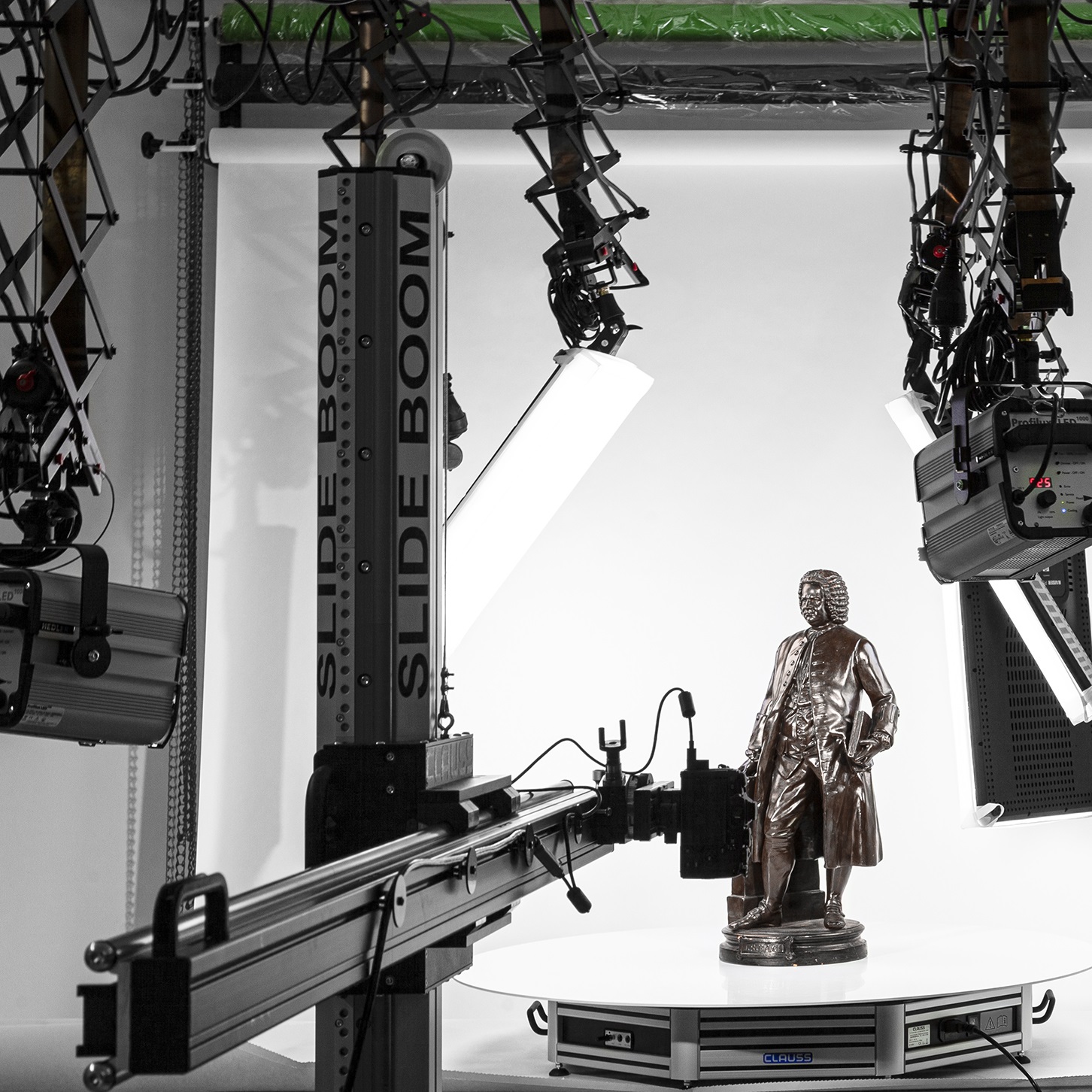
Digitisation at the Leipzig Museum of City History
In spring 2020, a new facility for digitising historical artefacts and objects was put into operation at the Stadtgeschichtliches Museum in Leipzig. The focus is on the holistic recording of the objects.
The system was projected, delivered and set up by CLAUSS, and the staff was trained in detail. In the video, Sabrina Linnemann, museologist and staff member of the Documentation Department, presents the technology used to create high-resolution photographs of 3D objects and larger graphics:
The Stadtgeschichtliches Museum Leipzig is the historical memory of the city. Things and information of the city events are collected, documented, commented and presented in exhibitions. The collection horizon stretches from Leipzig's urbanization in the early Middle Ages to the present. Founded in 1909 on the basis of the collection of the Association for the History of Leipzig, today the Stadtgeschichtliches Museum is a network of several types of museums, each with a different thematic focus. Only in their totality do they form a complementary multi-faceted picture of urban cultural history.
Very early on, as early as the beginning of the 2000s, the Stadtgeschichtliches Museum Leipzig also focused on digitizing the treasures lying dormant in the depot. Of the more than 600,000 objects, more than 70 percent have already been digitally recorded to date. Depending on the type of object, as well as the time of capture, the scope of the digitization varies from simple metadata to textured detailed 3D models. This not only facilitates the identification of objects in loan transactions or the conceptual design of exhibitions, but also serves to facilitate research and scholarly exchange across museums and countries via database platforms such as "Europeana".
Since the beginning of 2020, the objects have now been automatically recorded from all sides in the new studio installed directly in the depot. The Stadtgeschichtliches Museum Leipzig opted for a turnkey solution from the manufacturer CLAUSS.
In detail, the system consists of an interchangeable backdrop system, a permanent light ceiling track system, the CLAUSS SlideBoom universal boom stand, and the heart of the system, an automatic rotating stage for heavy loads, the CLAUSS JumboDrive 200.
Especially the combination of the SlideBoom with the JumboDrive 200 allows the camera to move in relation to the object in 2 axes. This allows the objects to be photographed from all directions and captured seamlessly.
The photographs produced in this way, usually several hundred per object, can be used in a variety of ways. While the entire image series is archived in high resolution and saved for possible later restoration or other applications, individual images of the series can be used for print or online media. Playing out the data for interactive presentations is particularly interesting. Two main forms have established themselves here.
The most frequently used form of presentation, since it does not involve any additional effort, is the presentation as a so-called "ObjectMovie". In this case, the various views of the object are shown interactively, i.e. controllable by the user, in such a sequence that the viewer gets the impression that the object is actually moving in front of a camera, and that this movement is controlled by the user. The playback software can be embedded in websites and thus also used online. This form of presentation makes almost no demands on either the infrastructure or the end devices. Due to the intelligent use of image tiling and dynamic image resolutions, playout even over mobile networks is no problem, although the user is enabled to zoom into the original image resolution from any perspective.
Another form of presentation is the conversion, often referred to as reconstruction, of the image data into a true 3D model with high-resolution textures. The algorithmic approach of a "Structure From Motion" (SFM) is often used for this purpose. This technology is currently still under development, but already shows very promising results in numerous use cases. Since the data basis for these 3D models is the same views of the objects from different angles, with each evolutionary step that the reconstruction algorithms will go through in the future, a new, possibly higher quality 3D output can be produced without having to digitize the objects again.
Various providers, e.g. "Sketchfab" offer online platforms for displaying 3D objects on the Internet. However, the fluid interactive application places higher demands on the end devices and the infrastructure. Some mobile devices are unfortunately unsuitable for this.
